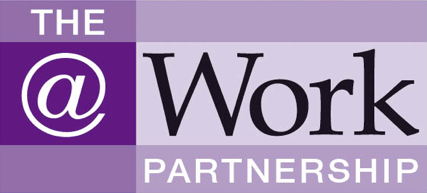Programme
- Day one:
-
Monday 15 April 2024 – Remote Learning
- 9.00
-
Registration
- 9.05
-
Introduction to vibration and HAVS
- 10.00
-
Legal framework & statutory requirements
- 11.15
-
Aetiology and Pathology
- Summary of concepts of pathological basis of each component of HAVS and CTS
- 12.30
-
Lunch
- 13.15
-
Clinical assessment
- Raynaud’s phenomenon, the vascular component of HAVS and vascular staging systems
- The sensorineural component, sensorineural staging, carpal tunnel syndrome and other neurologival differential diagnoses
- Musculoskeletal symptoms, cramp, grip strength, Dupuytren’s and other conditions
- 16.15
-
Remote assessment
- 16.40
-
Questions and discussion
- 17.00
-
Close of day one
- Day two:
-
Thursday 18 April 2024 (Birmingham) – Face to face learning
- 9.00
-
Registration and coffee
- 9.10
-
Welcome, recap and principles of health surveillance
- HSE tiered approach, and professional and legal requirements
- 9.55
-
OH management of cases
- Advice to employees and employers, legal issues and fitness for work
- 10.50
-
Common law aspects
- Review of key legal judgements and implications for OH advice/ management
- 11.35
-
Practical aspects of clinical assessment
- Assessing sensation, including monofilaments, two point discrimination, Pegboard assessment of vascular status and other relevant tests
- 12.15
-
Lunch
- 13.00
-
Case studies
- 14.00
-
Group work – clinical testing in practice
- 15.00
-
Discussion and revision
- 16.00
-
Faculty examination
- 17.15
-
Close of course
Benefits of attending
This training for OH professionals examines the requirements for health surveillance for a workforce exposed to hand-transmitted vibration, and the diagnosis and management of an individual with HAVS. It will provide an in-depth understanding of HAVS, and of the OH role in managing issues related to hand transmitted vibration in the workplace.
You will receive printed documentation for future reference, plus all delegates will be given a FREE copy of Hand-arm vibration syndrome: a guide for occupational health practitioners by Dr. Roger Cooke.
Who should attend?
This training is designed for OH nurses and doctors. Previous experience of HAVS is not essential, but experience and/or training in OH is required. Only those delegates who meet the HSE requirements (doctors or nurses holding the appropriate UK registration) will be permitted to take the examination at the end of the course, although others may attend.
Examination and certification
A formal examination, set by the FOM, takes place at the end of the course. Attendance at all sessions is regarded as a pre-requisite to sitting the examination, as the examination is based on content taught in the course. The majority of the exam is a mixture of true/false questions and multiple choice questions (approx. 30 questions per paper).
For nurses – there is a 30 minute exam (one paper only)
For doctors – there is a 60 minute exam (two papers)
Those doctors and nurses who successfully complete the examination will receive a Certificate of Competence accredited by the Faculty of Occupational Medicine.
About our expert tutors
Dr Roger Cooke is a consultant in occupational medicine, and honorary senior lecturer at the Institute of Occupational and Environmental Medicine at the University of Birmingham. His experience and interest in vibration-related disease extends over 40 years, including clinical practice, teaching, advising industry and specialist groups, writing on the subject and acting as expert witness in legal proceedings. He is the author of the book, Hand–arm vibration syndrome: a guide for occupational health practitioners, published by The At Work Partnership in 2020.
Three other expert tutors, Dr Susanna Gillibrand, independent consultant occupational physician, Andrew Cooke, clinical director at Clarity Healthcare and Dr Cornelius J Grobler, senior medical advisor for Jaguar Land Rover, lead some of the group work and/or lecture on the course.
Pre-course reading
All delegates will receive a FREE copy of Hand-arm vibration syndrome: a guide for occupational health practitioners by Dr. Roger Cooke, and this is required pre-course reading. It will be sent when the course fees have been paid.
Further guidance about Tier 3 Assessments
In order to perform HAVS assessments at tier 3 or above, occupational health professionals are required to:
- Be registered/licensed to undertake clinical practice as defined by their appropriate professional body (eg GMC for doctors, NMC for nurses)
- Have a higher qualification in occupational health. Doctors should hold a diploma in occupational medicine as a minimum. Other occupational health staff should have a higher qualification in occupational health, e.g. diploma or degree
- Have successfully completed a FOM approved HAV training course
Some specific tasks can be devolved to a technician but the suitably qualified OH practitioner must retain overall responsibility for the work of the OH Technicians as per the HSE regulations.
Extract from HSE Guidance on assessments

